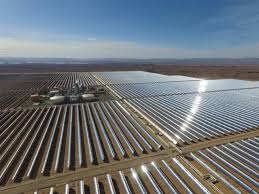The Red Sea Development Company (TRSDC), the Saudi developer that constructed the kingdom’s 28,000km2 The Red Sea Project, has announced it is creating the world’s largest battery storage facility to enable the entire site at 1,000MWh. The development will be powered solely by wind and solar energy, all throughout the day. The battery storage facility is one part of a significant public-private partnership agreement that TRSDC recently awarded to an ACWA Power consortium to design, build, operate and transfer The Red Sea Project’s utilities infrastructure. The PPP agreement expects to generate up to 650,000MWh of 100% renewable energy to supply the kingdom and other utility systems while emitting zero CO2.
Also Read: US $267m Antara residential development in Riyadh, Saudi Arabia opened
Battery storage is needed to support site-wide energy resilience, providing the power required at night when solar generation is not possible. It will also ensure supply in the case of outages when shutdowns occur due to potential faults or sandstorms affecting production. The blend of solar and wind power generation will also guarantee a reliable supply of energy to the destination. In addition, an innovative sewage treatment plant (STP) will allow waste to be managed in a way that enhances the environment, by creating new wetland habitats and supplementing irrigation water for landscaping at the destination.
John Pagano, the chief executive officer mentioned that “The size and scale of TRSDC’s battery storage facility puts this iconic regenerative tourism destination at the forefront of the global transition towards carbon neutrality. Wind and solar capacity are set to exceed coal and gas in less than five years, and we are keen to drive the pace of change.” The utility concession agreement allows for future expansion in line with the development of the destination, ensuring that the servicing needs of guests staying at the destination’s 50 hotels and 1,300 residential properties can be met by 2030.
